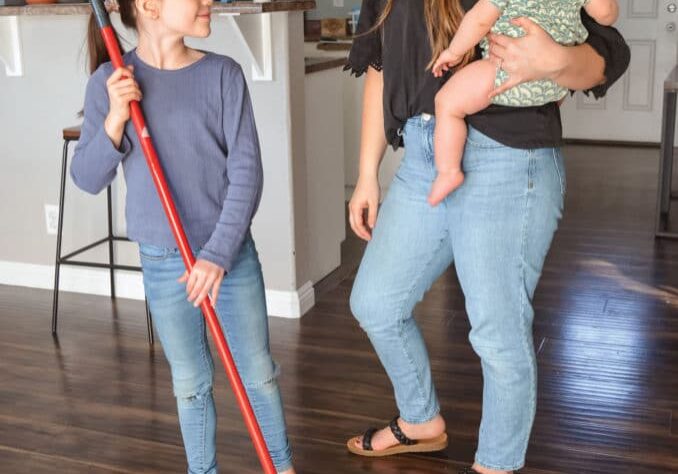The bedtime battle is a real struggle for many families. Besides sticking to a consistent routine, there are some other tips and tricks that can be helpful. It is important to consider the surrounding environment in which children rest and the activities they engage in before heading to bed.
Nature is a compelling tool that can create a calming bedroom space to help your children relax, unwind, and fall asleep easily without any fuss. Here are some ways you can incorporate nature into your family’s bedtime routine.
Use nature art and images and calming colors in the bedroom
Consider hanging art on the walls that present calming nature images, like trees or birds in the sky, to create a tranquil atmosphere in your child’s bedroom. Try choosing nature art with patterns, since scientists have discovered that naturally occurring patterns – called fractals – are aesthetically pleasing and help reduce stress. Clouds, leaves, tree branches, flowers, shells, and feathers are all good examples.
The colors we choose for our kids’ bedrooms can also play a role since the most calming colors are found in nature. According to color psychology experts, blue calms the mind and body, minimizes feelings of anxiety and aggression, and creates a sense of well-being. Green also promotes a serene and calming environment and is associated with wellness and healing. Neutral colors such as tan, beige, ecru, cream, light brown, taupe and gray have an organic, earthy feeling that softens the edges and warms up a space in a soothing way.
Many types of animals bring joy and peace to children. You can add animals to your home décor by hanging photographs and artwork of animals in their natural environment, choosing furniture containing animal motifs, or painting an animal mural on the wall.
Recreate the sounds of nature
When we step outdoors and listen mindfully to nature, we often feel more relaxed as a result of the restorative effect of natural noises. We can replicate that experience in our kids’ bedrooms by playing recordings of nature sounds like birdsong, wind, rain, ocean waves and trickling water. Besides masking disruptive noises that might keep our kids up, such as traffic or airplanes flying overhead, natural sounds reduce stress and anxiety.
The best nature sounds are those that provide a sense of natural space and mimic the biorhythms of an ecosystem like a forest. Loud screeching and croaking are just not going to result in the same calming feelings as sounds of water, for example, which are very soothing because of their slow, rhythmic whooshing noises. Stock up on nature music CDs or download some apps to help your kids relax at night. You can even record your own nature sounds from times you spent at the beach or went on a hike.
Visualize being in nature
Another way to get your kids ready to doze off is nature meditation, an easy way to help kids feel still and relaxed as they gently engage their imagination. A simple one is asking your child to close his eyes and see the different colors of a rainbow in his mind. Ask him to think about how each color smells, tastes and feels. Another idea is to have her paint a nature scene such as a sunset or forest in her mind. For inspiration search for nature meditations online, including Green Child Magazine’s guided meditations for kids.
Read a nature-center bedtime story
Every child loves a good bedtime story. And according to a research study out of the UK, reading is the best way to relax. Reading is a healthy distraction and helps kids feel calmer as they focus on the words they are listening to or reading. Books also help our kids escape from the present moment into a world of imagination that captures all their attention. They can often become so completely engaged in the story they reach a calm, meditative state that is great for dozing off. Bedtime stories bring you closer to your child, helping them feel safe and secure so they can get to sleep easily.
Nature-related stories are perfect for bedtime. Stories with natural, whimsical imagery can transport your kids to beautiful and serene locations, such as a garden or beach. Positive, colorful imagery swirling around in their minds as their heads hits the pillow helps them get a good night’s sleep. Nature poetry also does a wonderful job capturing the beauty of nature. Consider reading some of the most famous nature poets like Robert Frost and John Keats or looking for children’s nature poetry books like Handsprings by Douglas Florian or National Geographic Book of Nature Poetry: More than 200 Poems With Photographs That Float, Zoom, and Bloom! by J. Patrick Lewis.
Posted in: Health & Nutrition, Out & About
Comment Policy: All viewpoints are welcome, but comments should remain relevant. Personal attacks, profanity, and aggressive behavior are not allowed. No spam, advertising, or promoting of products/services. Please, only use your real name and limit the amount of links submitted in your comment.









